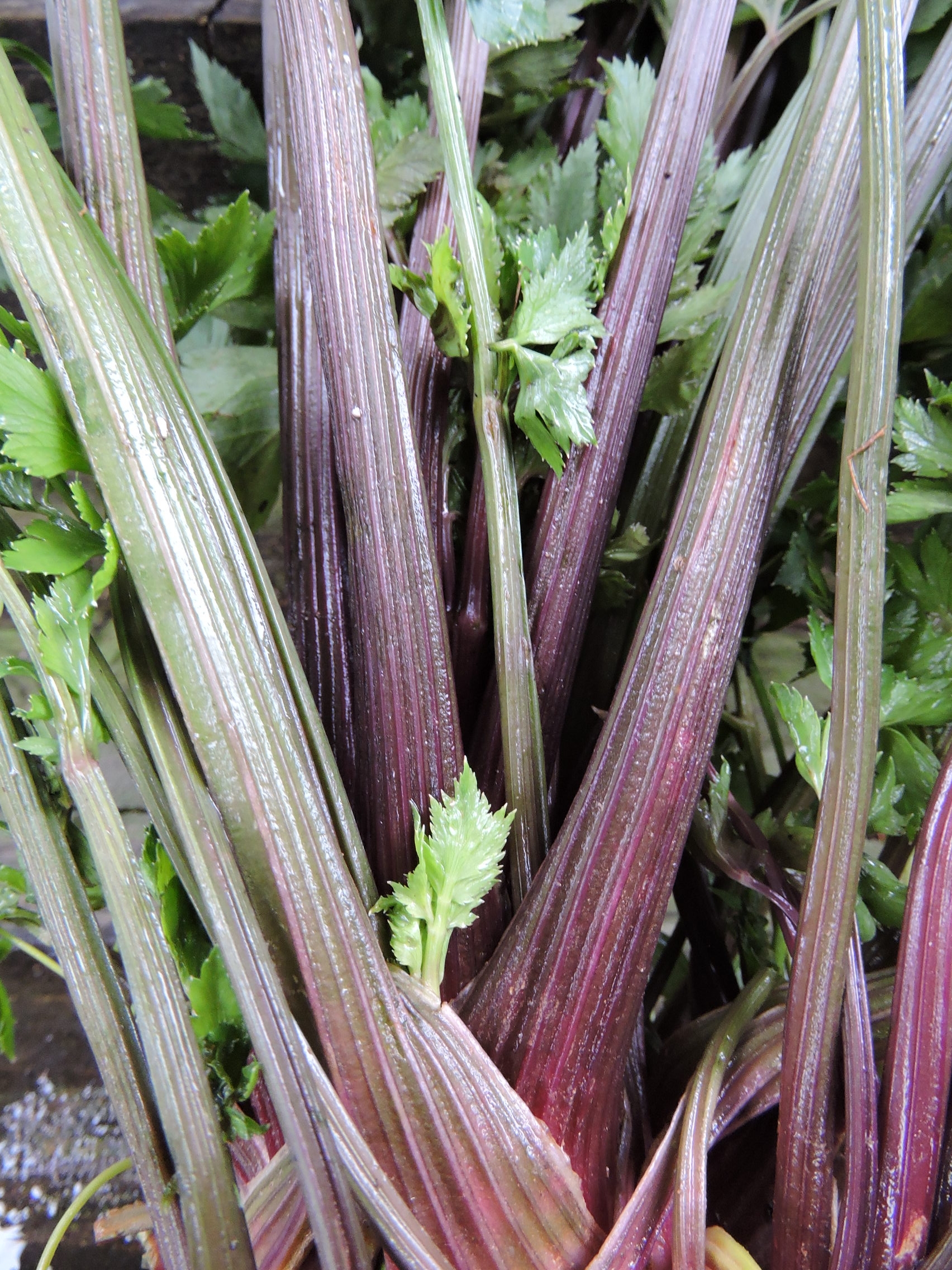The Heritage Farm Collection: 'Pink Plume' celery
/Celery - ‘Pink Plume’
- Small, compact plants with an abundance of stalks and leaves
Dark purple blush of color on inner stalks and leaf tips
Thin, solid stalks are sweet with an intense fennel-like flavor
“The most beautiful celery that ever graced a table.” - Peter Henderson & Co., 1894
Image from the 1894 Peter Henderson catalog
In 1894, the Peter Henderson & Co. seed house of New York introduced Pink Plume celery. Its beautiful appearance and intense flavor inspired gardeners and seed companies to add it to their collections. By 1903, over 100 seed houses across North America were offering this variety.
In 1981, Seed Savers Exchange compiled the first census of commercial variety offerings in the United States since the 1903 USDA census. By that time, ‘Pink Plume’ was no longer available. It re-appeared in the late 1990s, and it has been offered somewhat episodically since then. As of 2015, ‘Pink Plume’ had once again dropped from the seed trade. We are pleased to re-introduce it.
Put it on the Dinner Table
Page from the 1894 Peter Henderson catalog
This variety works for
- Fresh eating
Steaming
Baking
Soup
This is a very strongly flavored celery. Gardeners know that the celery grown at home has a much richer and complex flavor than the celery found in most stores.
Diced celery is a part of the "culinary trinity" of stock/broth, known as mirepoix, which also includes carrots and onions. Mix 2 parts onions to 1 part each of carrot and celery to form the flavor base for many stocks, soups, stews, and sauces.
Cajun and Creole cuisine also includes celery in "the trinity" along with onions and bell peppers. The trinity is the base of dishes such as gumbo and jambalaya.
Grow it!
This crop can be direct seeded into the soil after the last spring frost. You can also start plants indoors 6-8 weeks before the last frost date. Space your plants or seeds 6-8 inches apart in well fertilized soil. Plant your seeds 1/4-3/4 inch deep.
Make sure that your soil is well fertilized as this crop is a heavy feeder and takes a lot of nutrients from the soil. Consider adding compost to the soil the year before you plant. Mulching the soil around this crop can help protect the plant and keep roots cool and moist.
The CORE Project
This project represents the efforts of our Preservation program to document our Collection through the Evaluation and the Collection Origins Research Effort (CORE).
The CORE project began in 2011. It is an effort to record the Collection’s cultural history by gathering, documenting, and sharing stewardship history. Our comprehensive Evaluation program began in 2010. Evaluation staff document Collection growouts, including morphological traits, photographs, taste evaluation, and purity assessment. These programs converge to give us a rich portrait of individual varieties in our Collection.
When we identify varieties with both a compelling story and outstanding performance traits, they are ‘short listed’ for consideration in the ‘Heritage Farm Collection.’ Most ‘Heritage Farm Collection’ introductions are either family heirlooms or historic commercial varieties that faded from commerce.
About the Heritage Farm Collection
The ‘Heritage Farm Collection’ debuted in the 2012 Seed Savers Exchange catalog and illustrates our latest efforts to move varieties from our seed vault to America’s dinner table.
The histories shared in the print catalog are a condensed summary of the full story. We have often collected a more complete history. We hope you enjoy this blog series, in which we publish full portraits of the varieties we are introducing (or re-introducing) in 2016.
Seed Savers Exchange is a non-profit organization located in Decorah, Iowa, with a mission to conserve and promote America's culturally diverse but endangered garden and food crop heritage for future generations by collecting, growing, and sharing heirloom seeds and plants.














